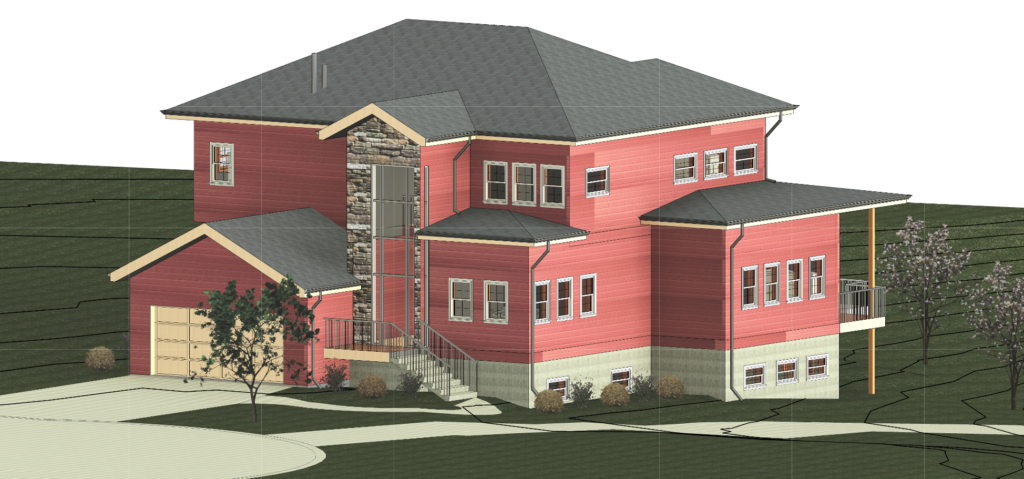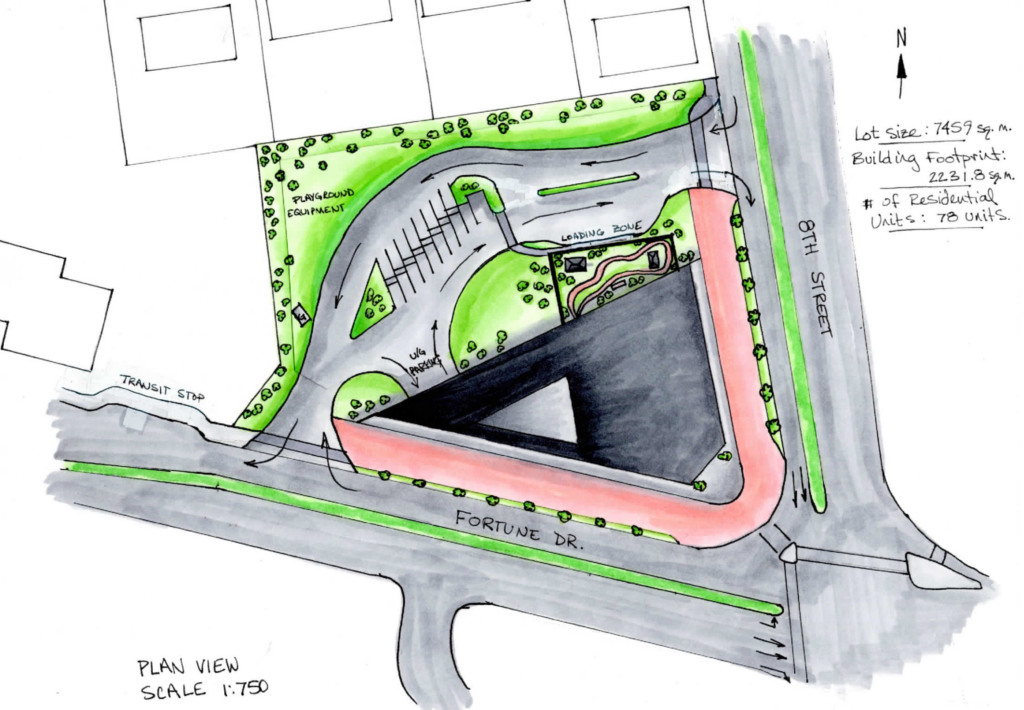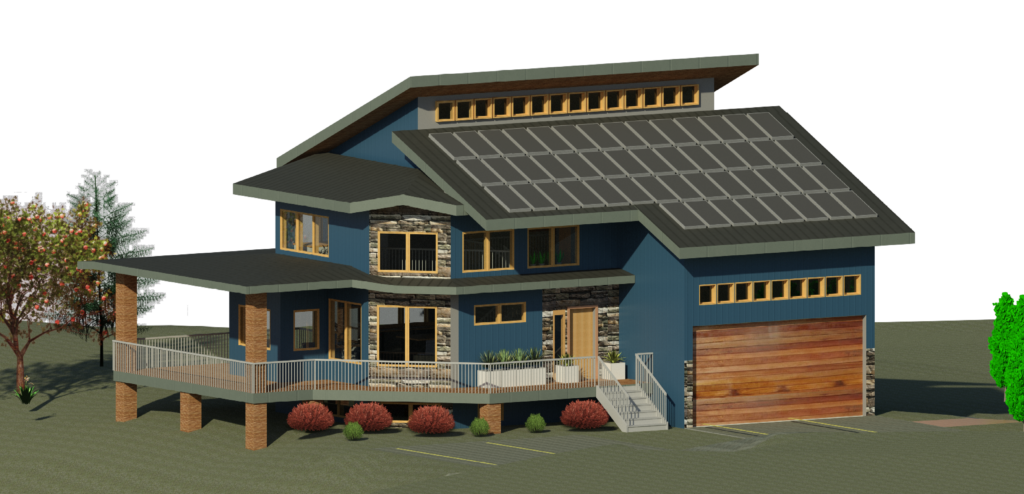Building Information Modeling covers technology and presentation techniques. We designed a custom residential house with an accessible suite designed for aging parents of the home’s owners. Multi-family houses increase population density and thus slow urban sprawl. Overall, this home would have a smaller environmental footprint per person than a single family home.





